Current Queensland Tide Levels
The tide levels (the blue line) presented in these images are near real time actual levels recorded up to one hour ago. The green line represents the tide prediction for each site, while the red line is the tidal residual.
Gold Coast (Southport Beach)
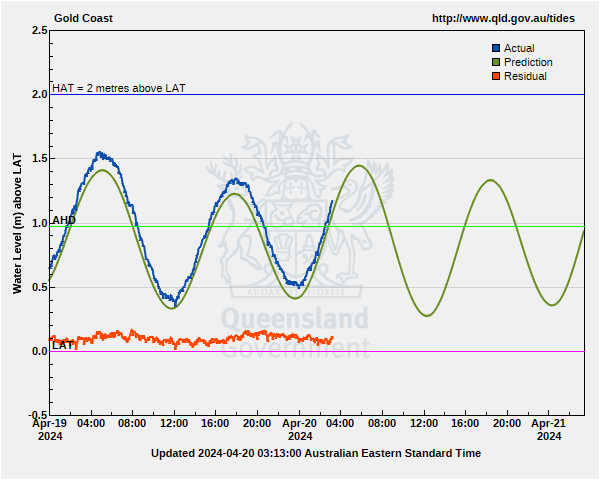
Banana Bank (Moreton Bay)

Raby Bay (Moreton Bay)
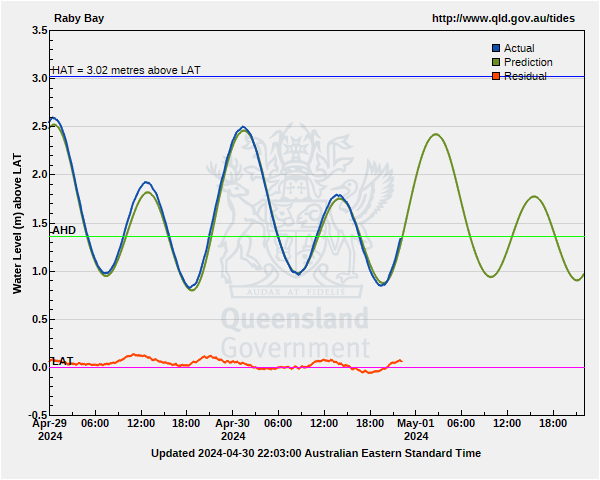
Birkdale (Moreton Bay)
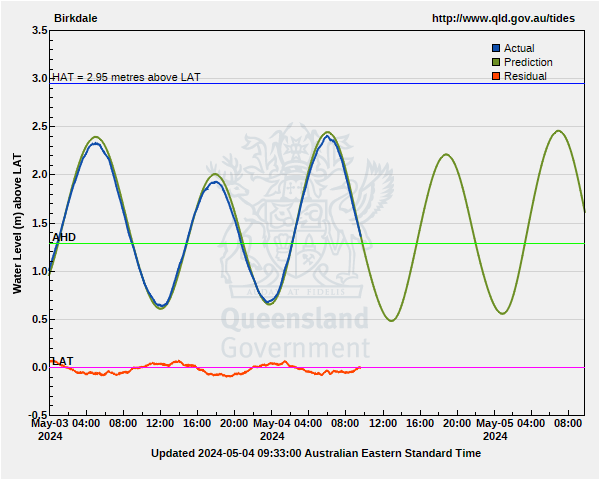
Brisbane River (Pinkenba Wharf)
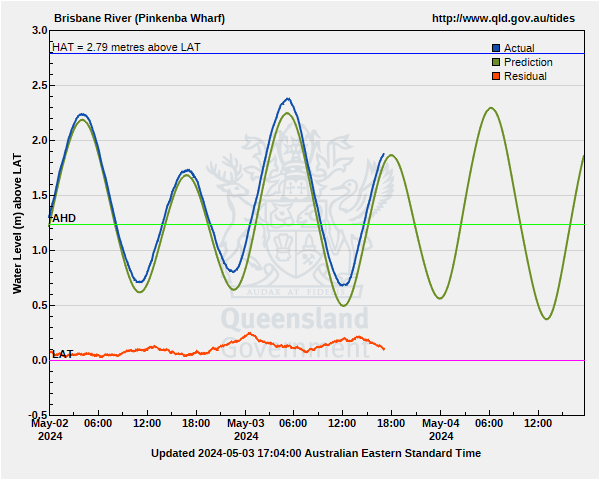
Brisbane Bar (Whyte Island)

Shorncliffe (Moreton Bay)
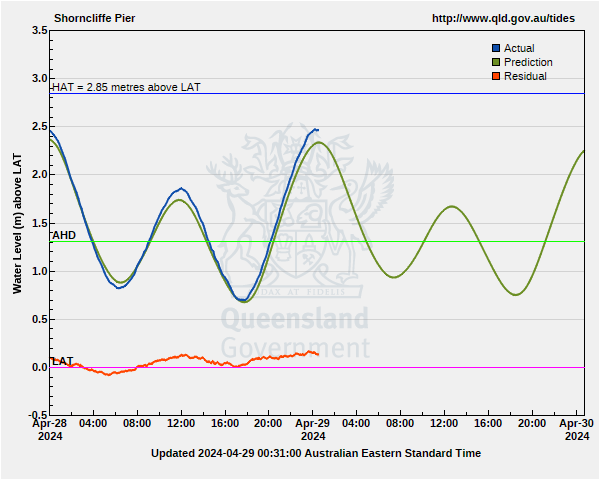
Scarborough (Moreton Bay)
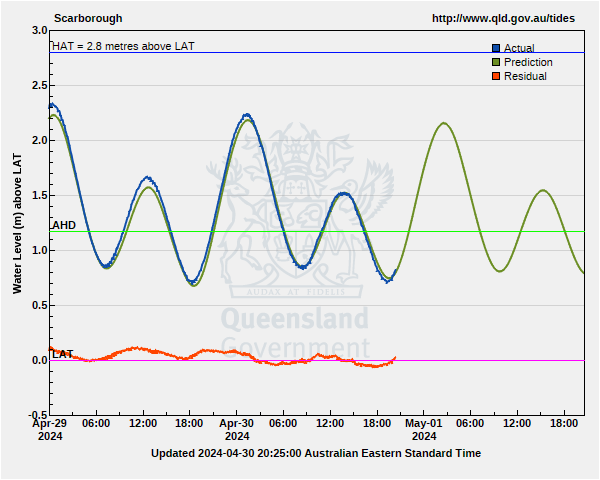
Tangalooma (Moreton Bay)
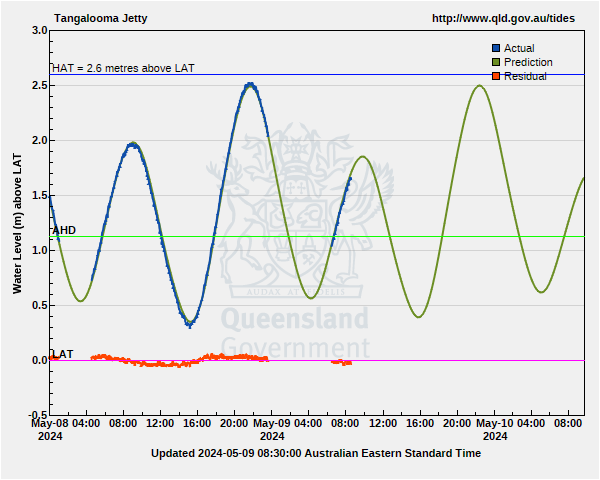
Golden Beach (Pumicestone Passage)

Maroochy River (Goat Island)

Mooloolaba

Noosa River Sand Jetty
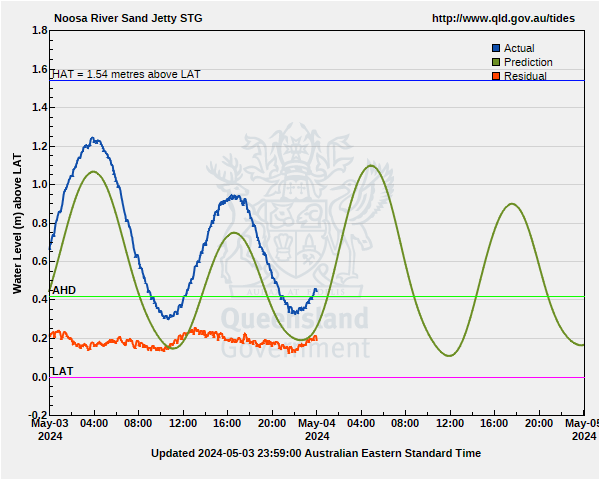
Noosa River Munna Point

Noosa River Tewantin

Urangan

Bundaberg (Burnett Heads)

Gladstone South Trees Island

Rosslyn Bay
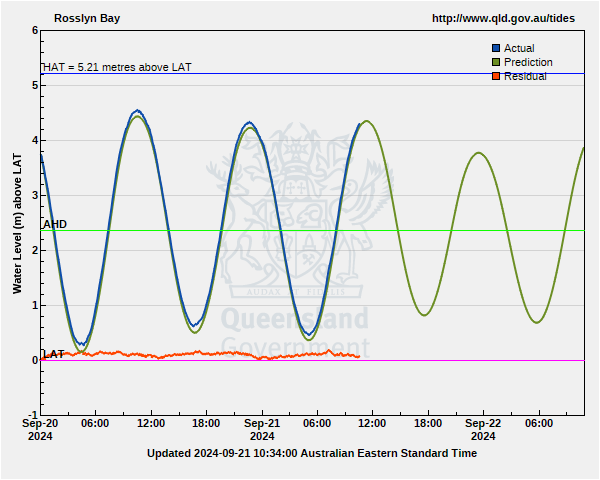
Hay Point (Dalrymple Bay)
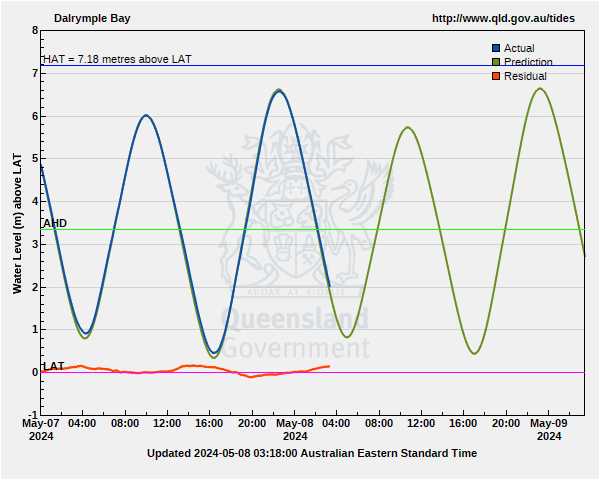
Mackay
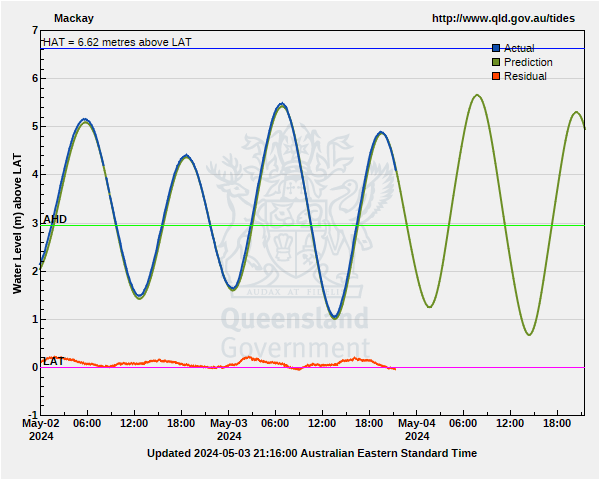
Seaforth

Laguna Quay

Abell Point Marina
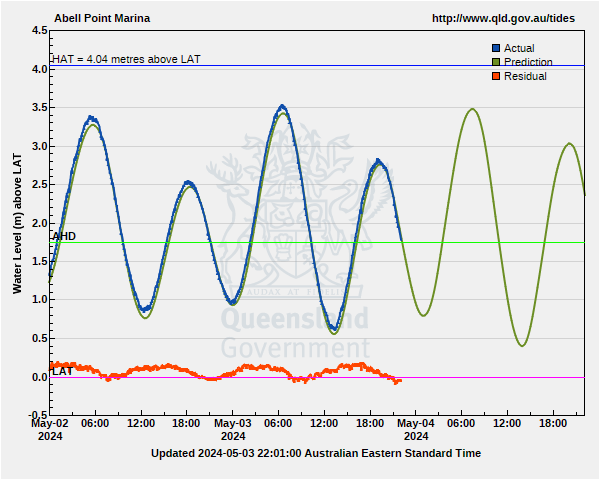
Bowen

Townsville

Lucinda
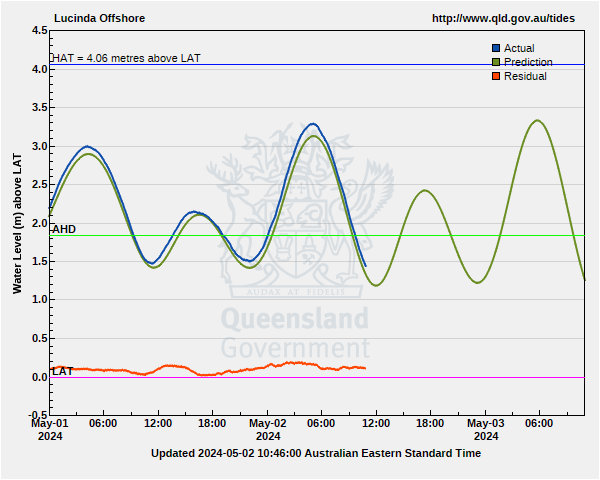
Cardwell
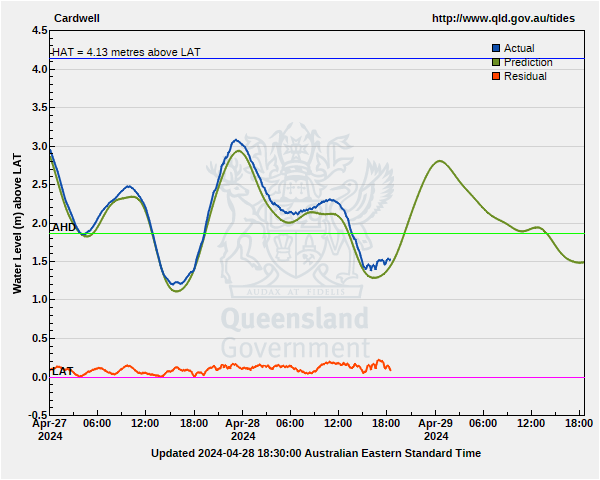
Clump Point
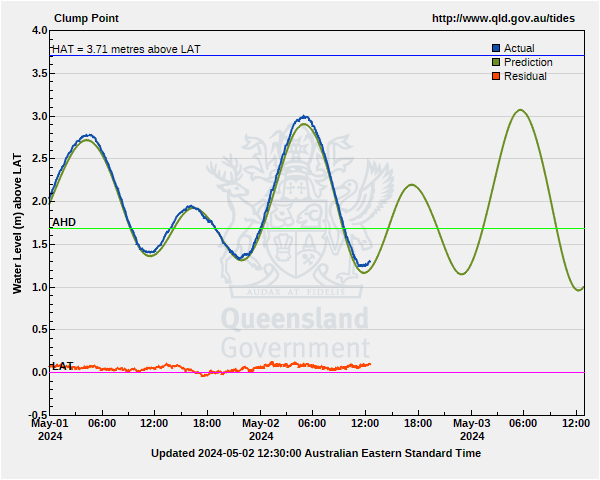
Mourilyan
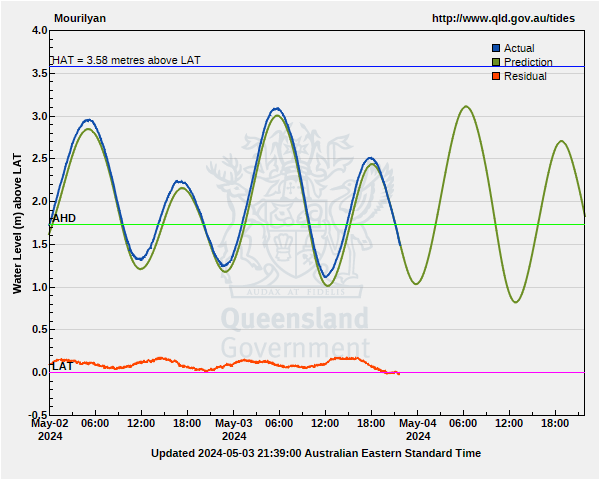
Cairns
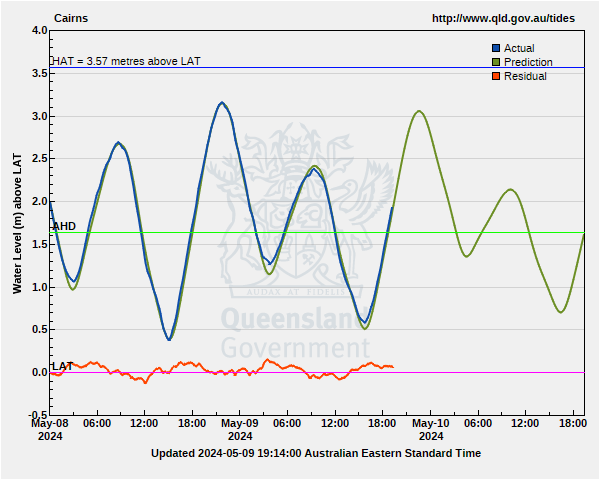
Palm Cove
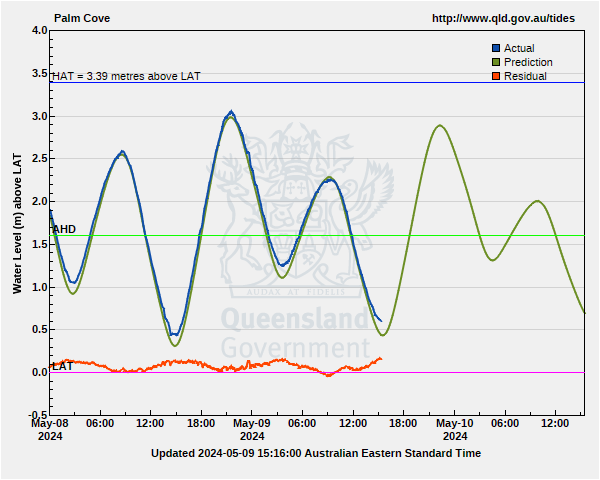
Port Douglas

Cooktown

Thursday Island

Weipa

Karumba

Burketown
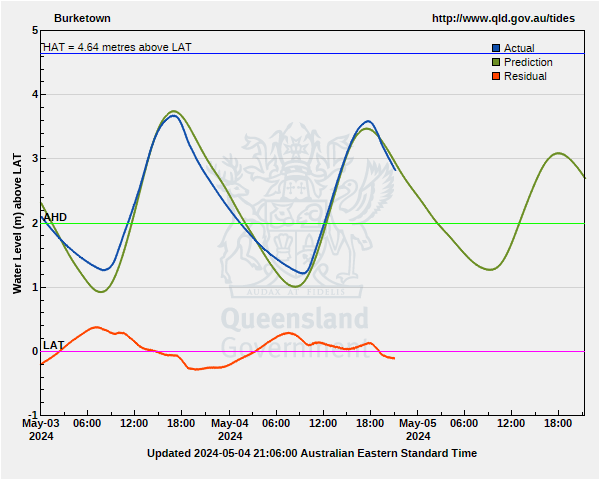
Mornington Island

Resources:
www.qld.gov.au/tides Creative Commons Attribution 3.0 Australia (CC BY) licence

 Marine Science Australia
Marine Science Australia